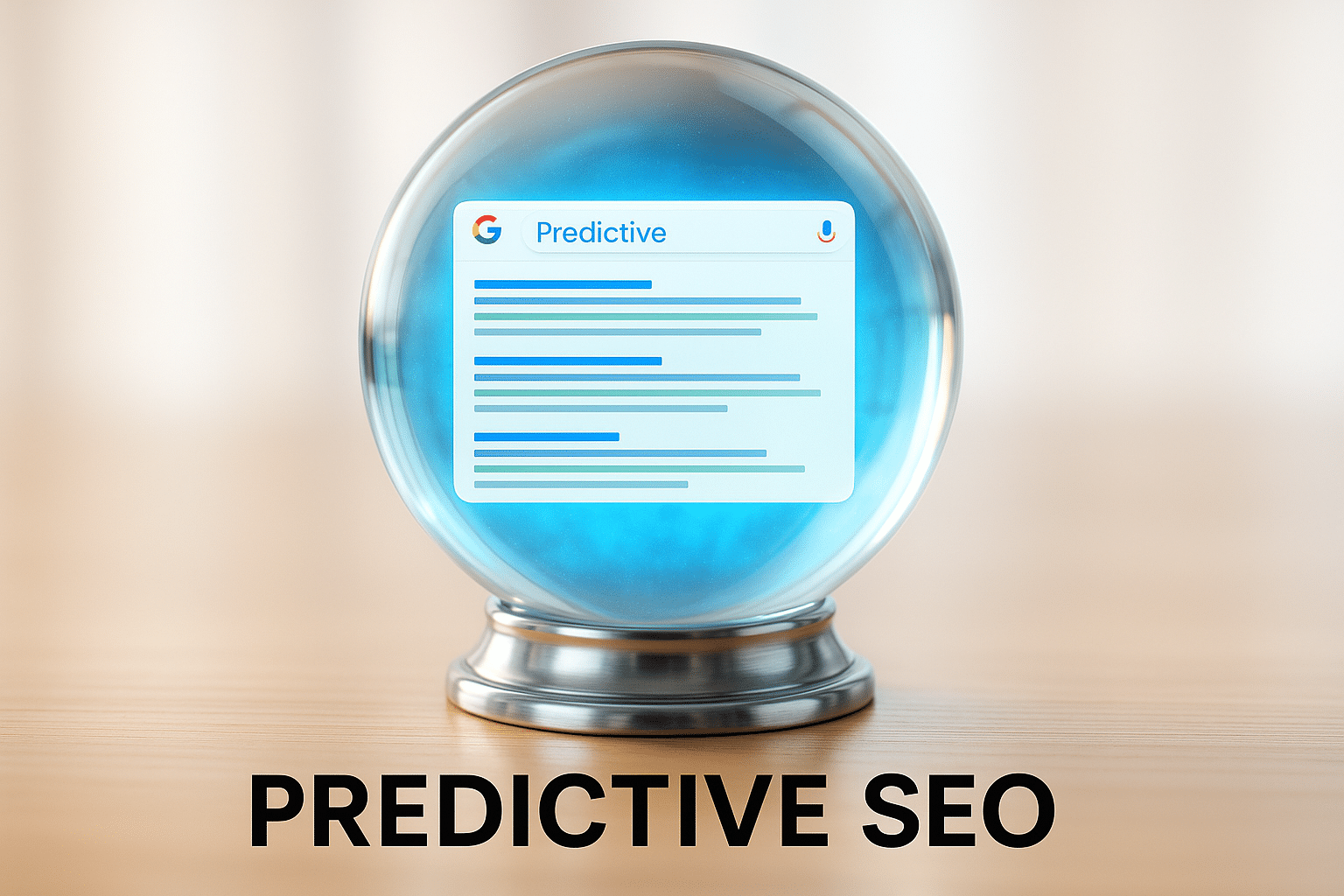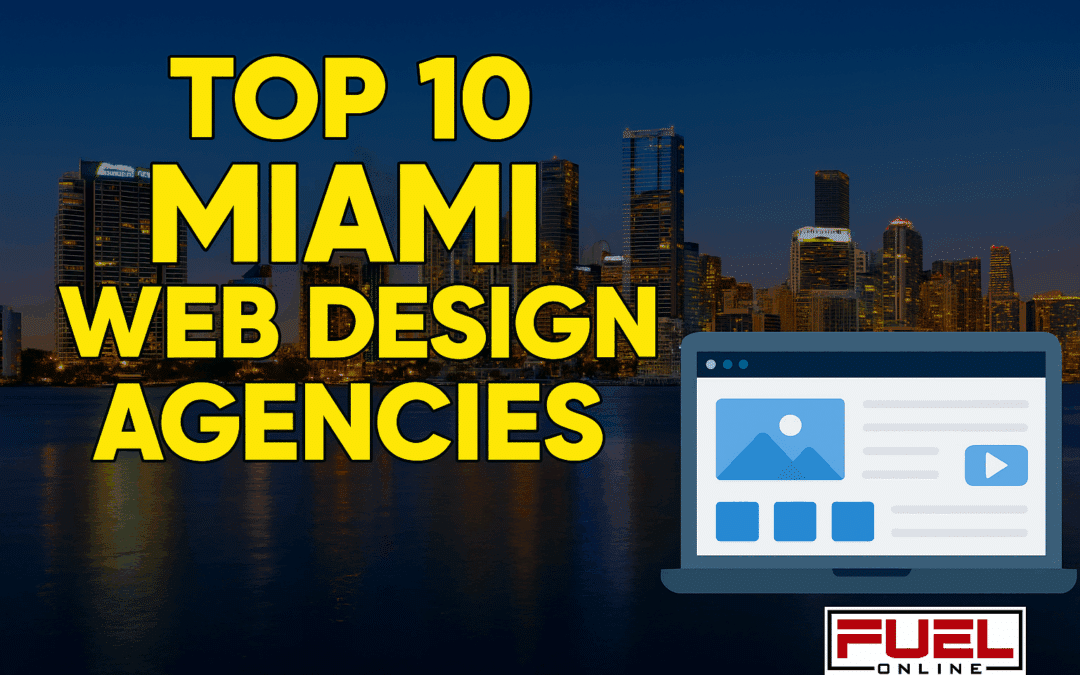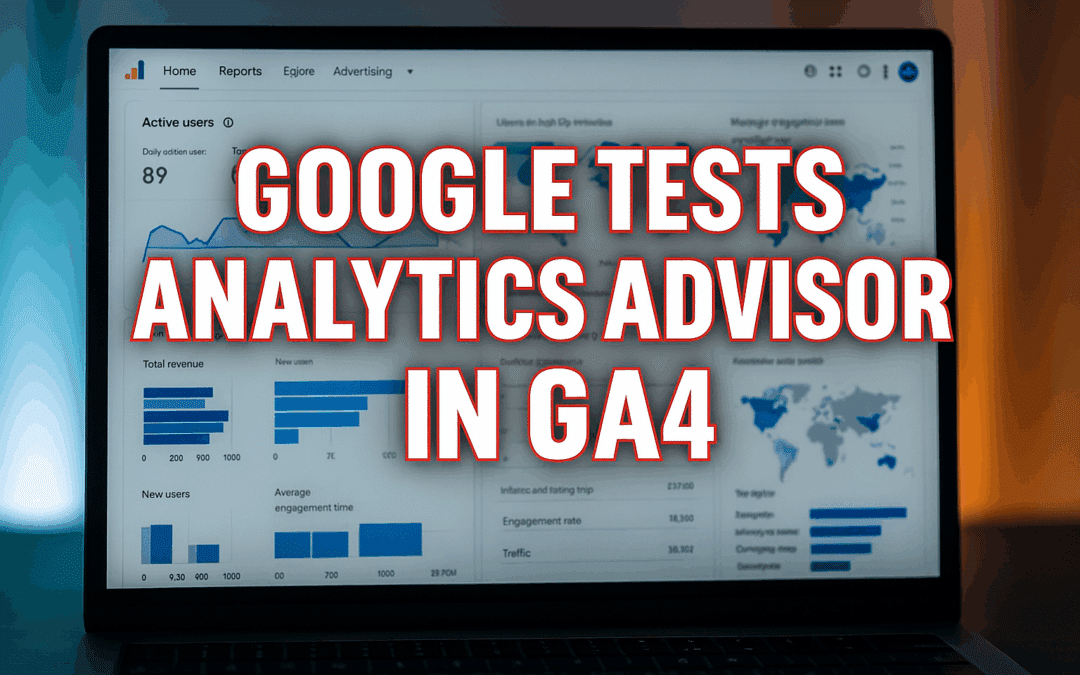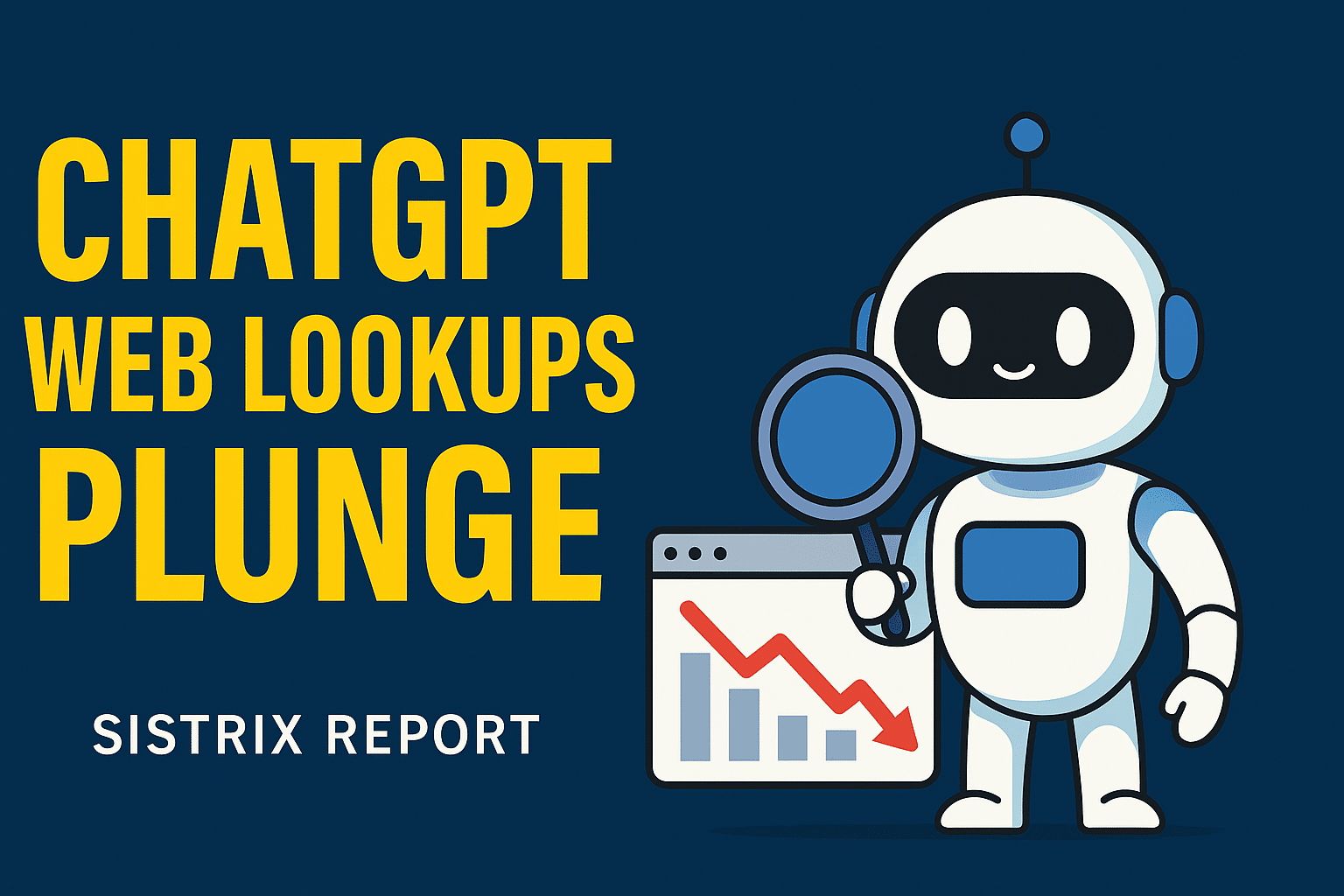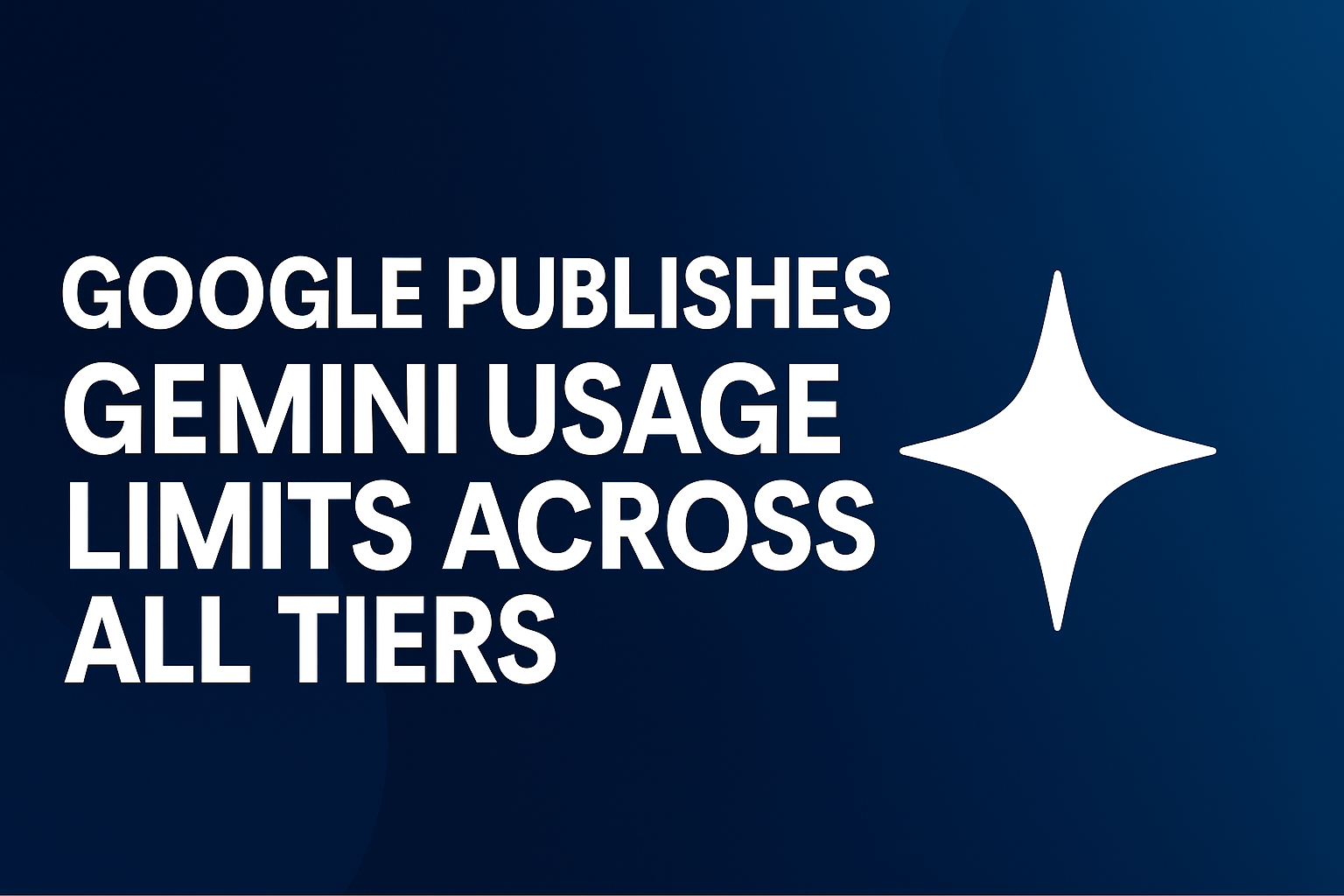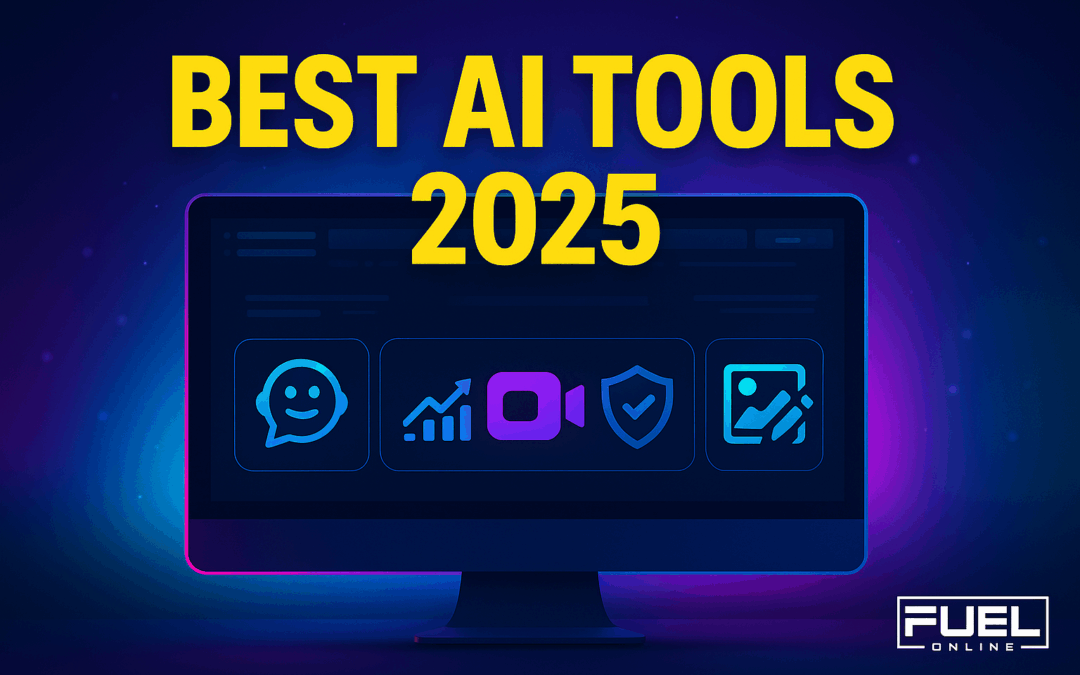For decades, SEO has been defined by reaction. Google updates an algorithm, rankings shuffle, traffic changes, and marketing teams rush to analyze the damage. Reports are written after the fact, executives are briefed on “what happened,” and resources shift into repair mode.
That reactive cycle made sense when search moved slowly. But today, the pace is accelerating beyond quarterly reporting. Generative AI search results, entity-based queries, and hyper-personalized experiences are already reshaping discovery. Relying on backward-looking metrics is like steering by the rearview mirror.
Enter predictive SEO — a new discipline where machine learning, volatility analysis, and intent forecasting allow organizations to look forward, anticipate changes, and make strategic decisions before disruption hits.
For CMOs and marketing executives, this shift matters because predictive SEO reframes organic search from a tactical channel into a strategic forecasting tool that aligns with how the boardroom thinks about markets, competition, and risk.
Why SEO Must Shift from Reactive to Predictive
Executives understand the value of forward-looking intelligence. CFOs forecast revenue, COOs model supply chain risk, and CEOs plan around geopolitical uncertainty. But SEO, until now, has lagged — stuck in keyword rankings and traffic reports that only explain the past.
This is problematic because organic visibility is market share. If your competitor appears where your buyers are searching and you don’t, you are effectively surrendering demand. And when algorithms or competitors shift suddenly, you may lose that share before you even realize what’s happening.
Predictive SEO closes that gap. Instead of waiting for quarterly surprises, marketing leaders can anticipate:
-
Where SERPs are unstable and likely to change.
-
Which queries are about to grow in importance.
-
How AI-driven search engines will summarize answers.
-
When competitors are likely to overtake your visibility.
It moves SEO into the language of executives: risk mitigation, forecasting, and competitive positioning.
How Predictive SEO Works: The Mechanics
The discipline relies on a blend of advanced analytics and AI-driven modeling. At its core, predictive SEO is built on four pillars:
1. SERP Volatility Forecasting
Search results are not static — Google experiments with layouts, tests AI Overview rollouts, and rotates domains. Predictive models measure this instability, identifying which queries are “safe holdings” and which are “volatile assets.”
-
If volatility scores rise for your most profitable keywords, you know disruption is imminent.
-
Instead of waiting for rankings to drop, you can reinforce content, schema, and link acquisition proactively.
This is the SEO equivalent of weather radar: not asking if a storm exists, but where it will hit next.
2. Emerging Query & Intent Discovery
Traditional SEO reports only highlight queries once they’ve already reached critical mass. By then, the market is crowded. Predictive SEO uses early indicators — shifts in autocomplete, rising subtopics on forums, changes in entity relationships — to detect future high-value queries before they explode.
Example: a nutraceutical brand that spotted early growth in “berberine” search queries in 2022 could have dominated the space by 2023.
For executives, this creates first-mover advantage: an opportunity to position the brand as the authority in a trend before competitors even realize it exists.
3. AI Search Simulation
As AI Overviews and tools like Bing Copilot rewrite how users consume answers, traditional ranking data is no longer enough. Predictive SEO now includes simulation engines that model how AI-generated answers are likely to summarize your market’s queries.
This exposes risks like:
-
Your brand ranks #2 organically but isn’t cited in the AI answer.
-
Competitors dominate the generative box despite weaker traditional rankings.
For CMOs, this shifts SEO from being about “clicks” to being about credibility and brand authority inside AI-driven summaries.
4. Competitor Disruption Modeling
Competitors aren’t passive. Predictive SEO platforms track when rivals launch new content clusters, acquire authoritative backlinks, or increase publishing velocity. Machine learning models estimate the likelihood those moves will displace your visibility — and on what timeline.
This transforms SEO reporting from: “We dropped last quarter” into “Our competitor is projected to overtake us within 90 days unless we respond.”
That’s not just SEO data — it’s strategic risk intelligence.
Why This Matters to CMOs and Marketing Executives
From a leadership perspective, predictive SEO matters because it changes how SEO contributes to the enterprise. It’s no longer about celebrating wins or explaining losses. It’s about aligning SEO with the strategic functions of the business.
Protecting Market Share
Organic visibility is often the first touchpoint in a buyer journey. Losing rankings is not a vanity issue — it’s a direct loss of share in the digital market. Predictive SEO ensures executives see which parts of that share are at risk and can act early.
Forecasting ROI
Executives want to know: “If I invest in SEO today, what return will I see tomorrow?” Predictive SEO can answer by modeling not just historical returns, but projected traffic, conversions, and revenue tied to emerging queries.
Aligning with Boardroom Reporting
Boards are accustomed to forecasts — not just results. Predictive SEO reframes reporting in terms like probabilities, scenarios, and projections that executives already use in finance and operations.
Future-Proofing Against AI Disruption
Generative search is already changing the rules. Predictive SEO helps leaders see where traffic cannibalization is coming and how to reposition visibility from clicks to brand presence inside AI answers.
Where Predictive SEO Creates Advantage
The real power of predictive SEO is that it compounds. Early adopters will enjoy advantages that laggards may never recover from:
-
Owning Emerging Queries
Publishing content six months before a topic spikes creates a durable authority moat. -
Defending High-Value SERPs
Forecasting volatility lets you defend critical keywords before they’re lost, saving significant revenue. -
Winning AI Summaries
By simulating AI Overviews, you can optimize content for inclusion and protect brand credibility. -
Outpacing Competitors
Modeling competitor disruption allows you to invest preemptively, securing your lead instead of losing it.
For executives, the implication is simple: predictive SEO is no longer a tactical experiment — it’s a strategic differentiator.
Case Study Lens: Two Different Futures
Imagine two enterprise software companies in the same space.
-
Company A relies on traditional SEO reporting. They celebrate rankings today, notice drops tomorrow, and respond reactively. By the time they fix content or backlinks, competitors have captured the demand.
-
Company B embraces predictive SEO. Their models forecast volatility on high-value queries, identify emerging customer questions, and simulate AI Overview inclusion. They preemptively publish, adjust, and strengthen their authority before disruption arrives.
When market conditions shift, Company A explains losses to the board. Company B reports gains — not because they reacted faster, but because they saw it coming.
How to Implement Predictive SEO
For executives ready to integrate predictive SEO, the path is straightforward:
1. Audit Current Risk Exposure
Identify which pages and queries are most tied to revenue. Then map which of those show signs of volatility, AI disruption risk, or competitor encroachment.
2. Deploy Predictive Tooling
Adopt platforms that incorporate volatility forecasting, emerging intent detection, and AI search simulations. This can be done through enterprise SEO suites, custom machine learning models, or third-party intelligence tools.
3. Redefine SEO KPIs
Move away from rank tracking and traffic alone. Introduce predictive KPIs such as:
-
Probability of ranking loss within 90 days.
-
Forecasted ROI of emerging keyword clusters.
-
AI answer inclusion rate.
4. Integrate with Strategic Planning
Ensure predictive SEO isn’t siloed in marketing. Align insights with sales forecasts, product roadmaps, and board-level reporting. Make it a business forecasting function, not just a marketing tactic.
The Executive Imperative
SEO is entering its predictive era. The discipline is no longer about reporting what happened, but about forecasting what’s about to happen — and positioning the organization to win before competitors even know the opportunity exists.
For CMOs and executives, this is not a tactical shift. It’s a strategic imperative. Predictive SEO aligns marketing with the boardroom’s language of foresight, probabilities, and competitive advantage.
The brands that adopt predictive SEO today will not just survive AI-driven search disruption. They will own the future of digital discovery.

